If you have young fruit trees that you’ve planted within the last few years, it’s about time to prune them. Late winter and early spring are pruning seasons in orchards and backyards alike (at least in the northern hemisphere). Every young fruit tree, whether it’s an apple, pear, or stone fruit, needs a little winter pruning to guide it into the best form for bearing fruit.
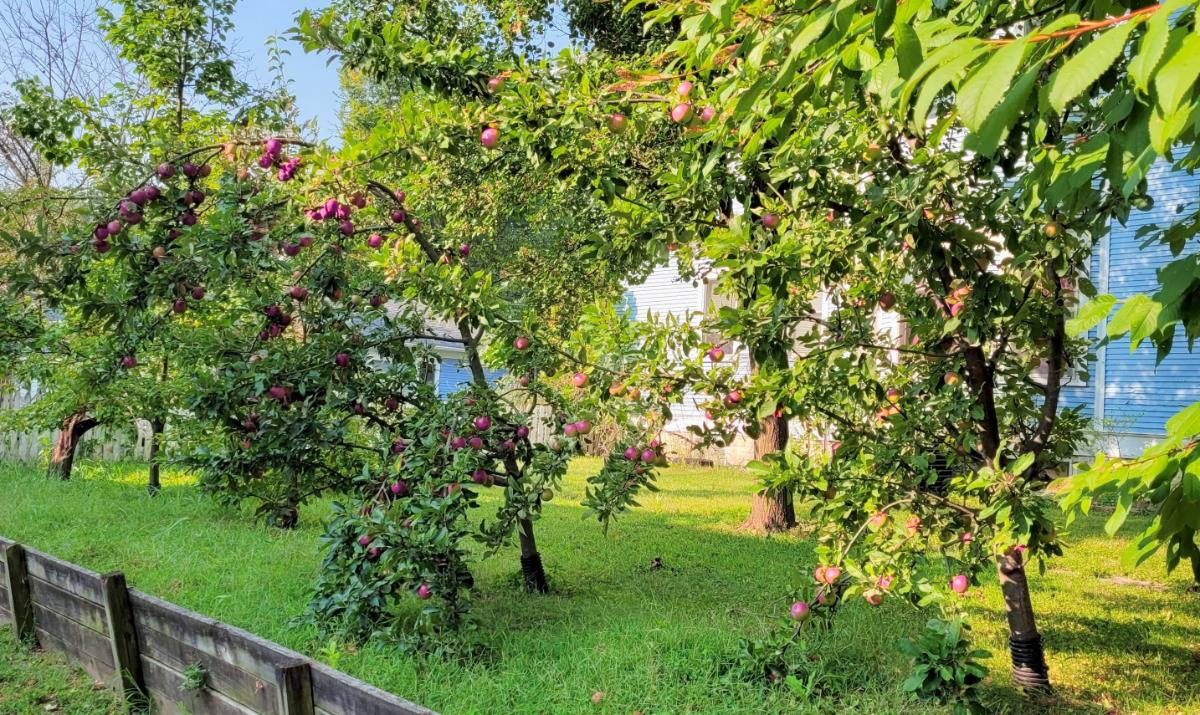
Jump to:
- Why Do Young Fruit Trees Need Pruning?
- Don’t Worry – Fruit Trees Are Forgiving
- When Is the Best Time to Prune Fruit Trees?
- Supplies for Pruning Young Trees
- How to Prune a Brand-New Fruit Tree
- Prune Young Apple Trees to a Central Leader
- If a Young Fruit Tree Doesn’t Have a Central Leader
- Vase Pruning, aka Open Pruning – Another Viable Choice
- Pruning Tips
- Second-Year Pruning
- Some Pruning Shouldn’t Wait Until Late Winter
Why Do Young Fruit Trees Need Pruning?
- To stimulate your tree to develop stronger buds and vigorous growth. A pruned tree grows more blossoms and fruit than an unpruned tree.
- To give the tree shape and structure.
- To make the fruit easier to reach.
- To open the tree up so more light and air can move through it.
Don’t Worry – Fruit Trees Are Forgiving
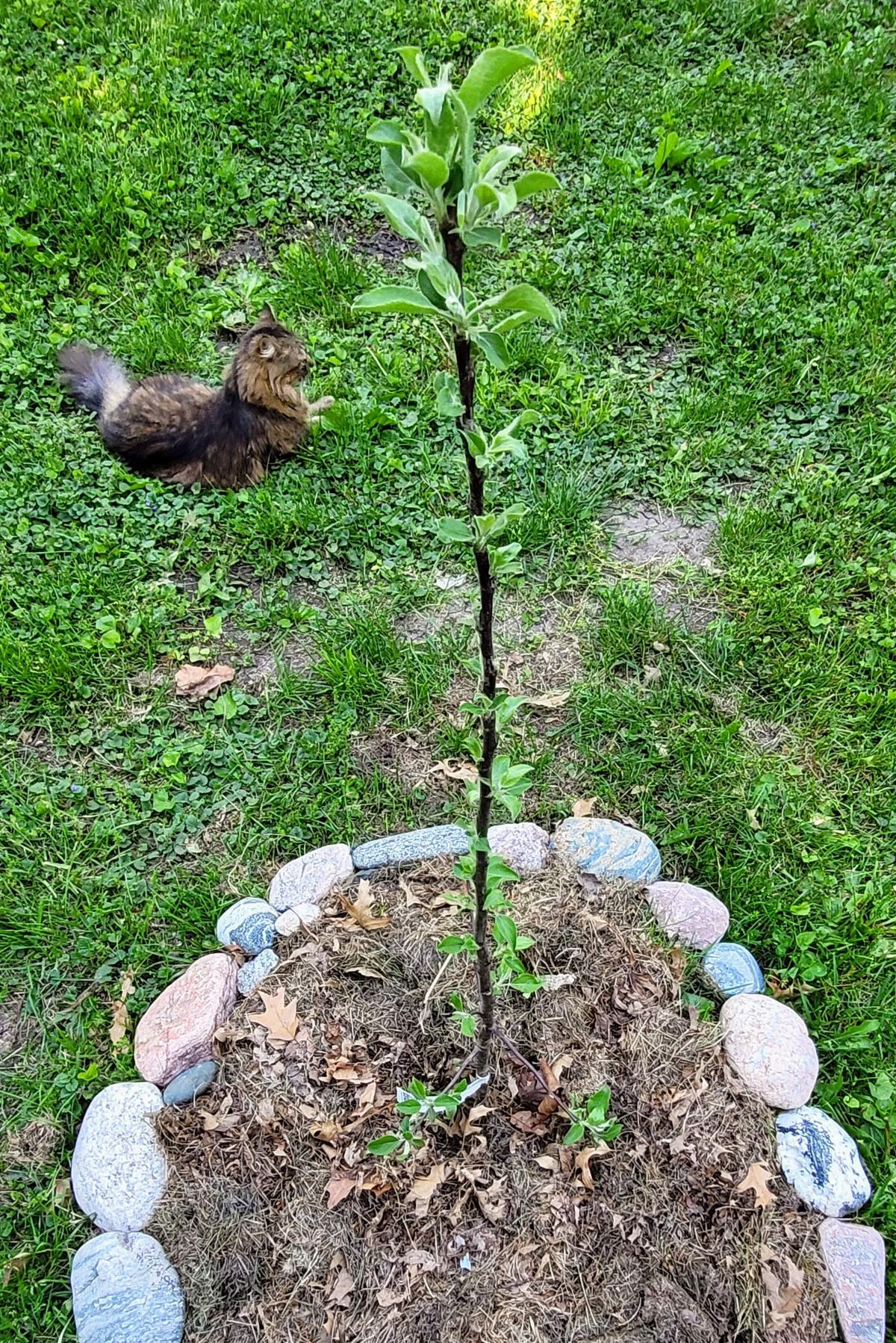
Ever since I planted my Gravenstein apple that I got from my daughter last year, I have been worrying about how to prune it. I keep having this irrational fear that I’m going to do something wrong when pruning my apple tree – even though I’ve worked as a horticulturist for a big chunk of my life. I should know what I’m doing!
If you’re also concerned about pruning the tree wrong, remember these things:
- There are a lot of ways to prune young fruit trees. Even expert orchard growers use different pruning methods.
- Even if you do make a mistake, trees are forgiving. You can fix pruning mistakes as the fruit trees grow.
- It’s better to do some pruning than none. Even lightly pruned apple trees bear more fruits than unpruned ones.
When Is the Best Time to Prune Fruit Trees?
Fruit trees benefit most from being pruned and shaped during winter when they’re dormant. Early spring is probably the best time, but to be honest, fruit trees can be pruned any time after they drop their leaves.
Supplies for Pruning Young Trees

- Warm gloves that allow you to handle your pruners and keep you from freezing your fingers. For chilly days, I highly recommend anything with Thinsulate in it. I’ve used gloves, mittens, and hats with Thinsulate when working for the city parks department, and they keep your hands dry and warm in sub-zero weather. That stuff is a miracle.
- A good pair of pruners, naturally.
- For older trees with larger branches, you might need a hand-held pruning saw or a pair of loppers.
How to Prune a Brand-New Fruit Tree
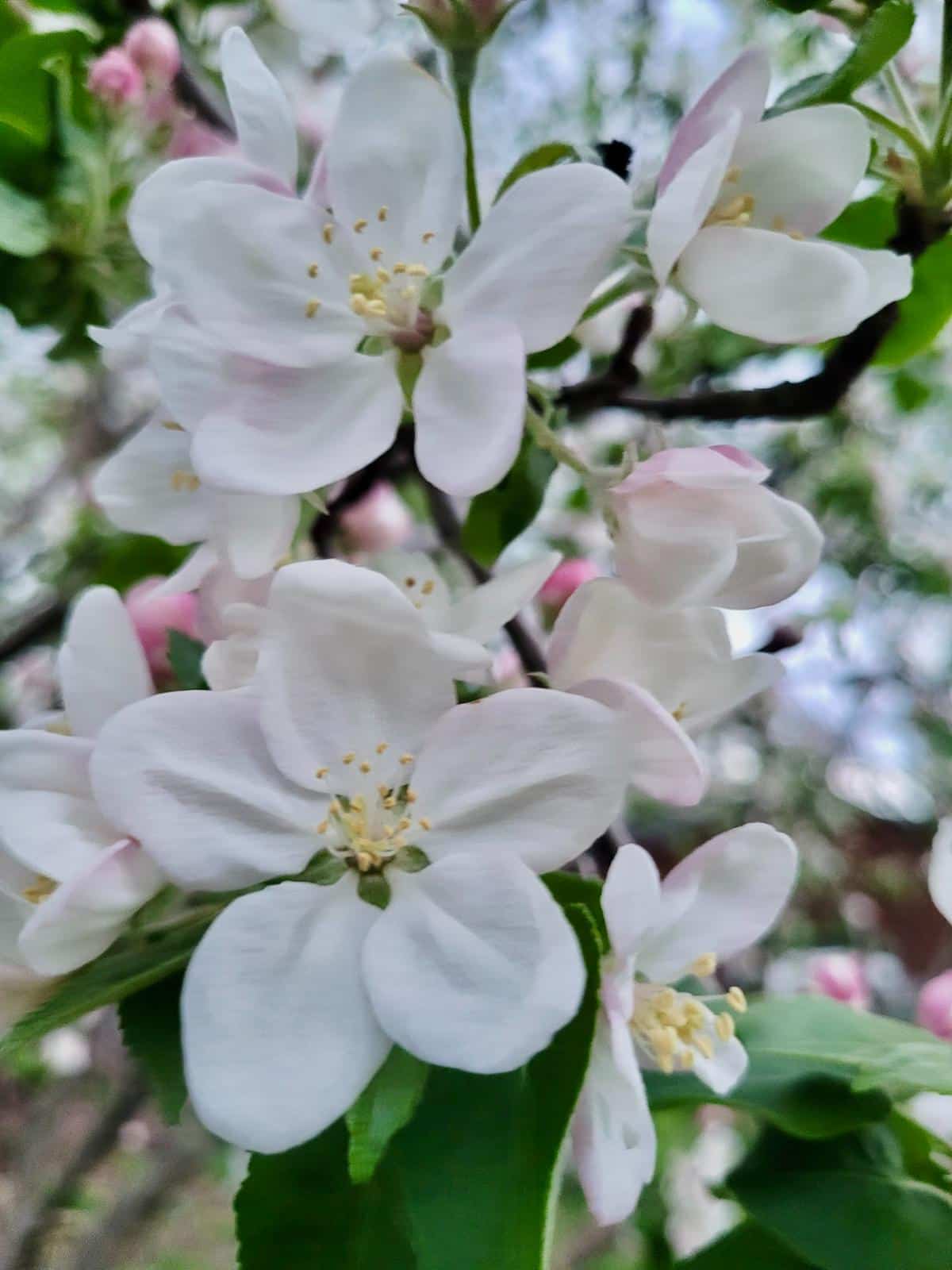
Young fruit trees are generally shipped and planted in early spring once the ground thaws. Check the direction sheet you get with your tree. Some companies will send you a bare-root tree that has already been pruned. If that’s the case, there’s no need to prune it again, and you can skip this section.
In other cases, though, you might get a branchless whip – that is, a young seedling with no branches that looks like a whip.
When your apple tree is dug up from the growing field and potted, it loses many delicate feeder roots that absorb moisture and nutrients.
After you plant a whip, cut where you want the lower branches to appear, at least 30 inches from the ground. This reduces the above-ground growth to a size that the freshly-cut roots can manage until they repair themselves and get established. Once the leaves appear, the roots will be able to pull enough water and nutrients out of the ground to support them.
This cut also stimulates the growth of side branches. If you didn’t cut the top of the tree when you got it, that’s okay; you can do it in winter with the rest of the shaping and pruning.
Prune Young Apple Trees to a Central Leader
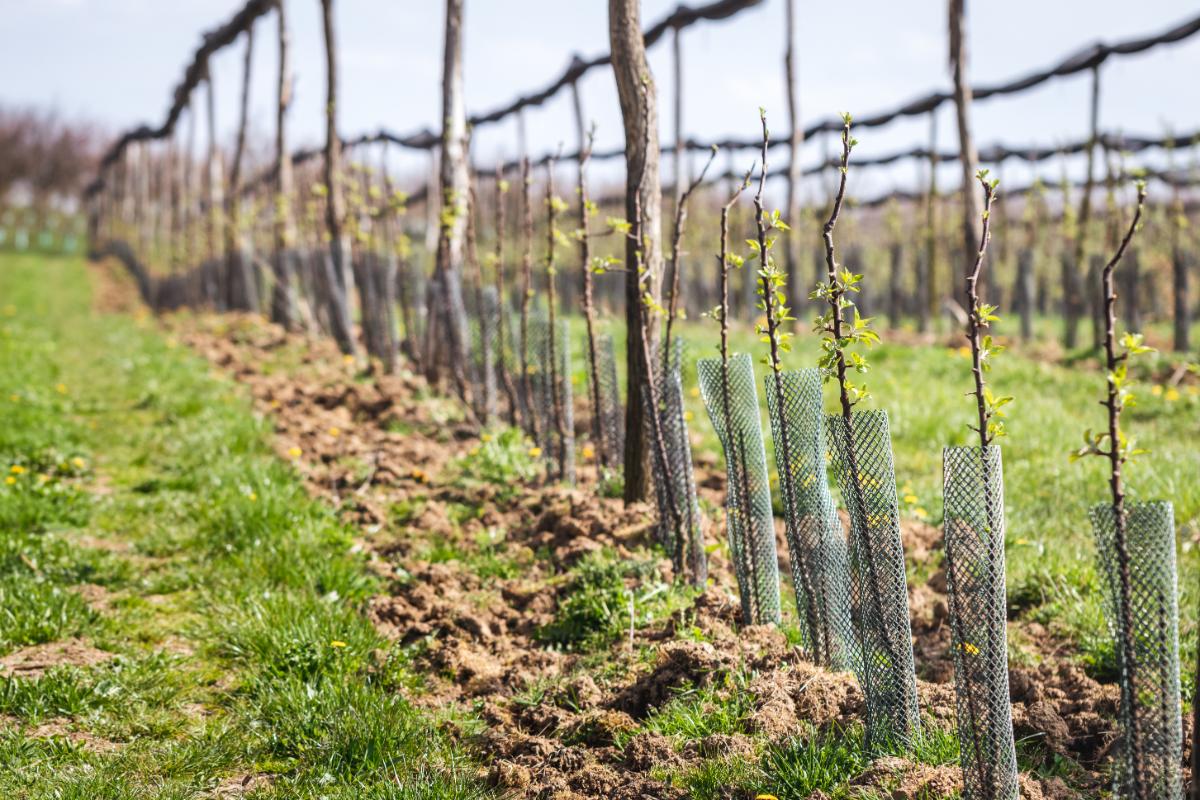
Apple trees, especially dwarf and semi-dwarf varieties, can be pruned to a central leader (that is, a branch that grows straight up from the trunk and serves as the center of the tree). This leader branch must be taller than all the other branches. In plant physiology, this is called apical dominance.
When there’s no central leader, a lot of branches start growing straight up, trying to become the new leader. This is bad for apple trees because now all the growth is growing up instead of growing out. Upward growth means fewer spurs, fewer flowers, and fewer apples.
So, keeping that leader branch allows the other branches to spread out horizontally. Horizontal growth allows buds to grow all along their length, bearing flowers and fruit.
If a Young Fruit Tree Doesn’t Have a Central Leader
If the tree is only a few years old and has several leading branches, cut off all but one in the top branches. Cut back the closest branches a few inches so the center one is the tallest. You want the central branch to stay ahead of the others.
Vase Pruning, aka Open Pruning – Another Viable Choice
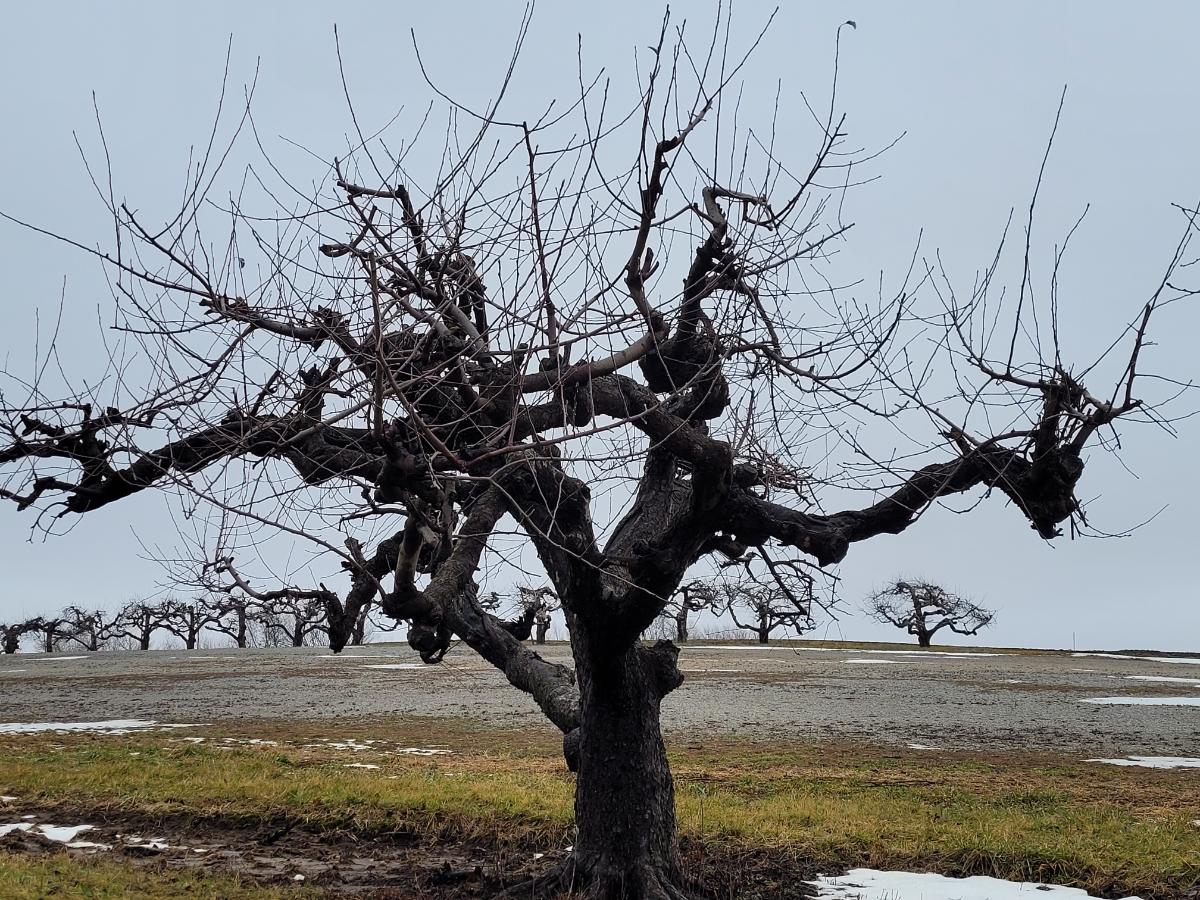
A zillion years ago (actually, about 32 years now), I asked Grandma Mary how to prune the apple tree in my yard.
“Cut off any branches that are reaching straight up for the sky,” she said.
I did not know until writing this article today that this technique is called vase pruning or open pruning.
All the orchards here in my part of Missouri use various styles of vase pruning for height control, especially in U-Pick orchards. The leader is cut off above the ground, and (as Grandma said) all branches pointing up are removed. The result is a shorter tree with many branches accessible from the ground.
Apples are said to benefit more from having a central leader, but stone fruits do best with vase pruning. They have more trouble with diseases, so having that open center maximizes airflow through the branches. Open pruning also makes pruning easier and keeps the growth near the ground.
Open pruning also allows the fruit to ripen and color up beautifully.
The drawback to vase or open pruning is that the tree interior keeps producing new wood because of all the sun it’s getting. Then you have to prune that wood out in winter.
Open pruning can also be a problem for heavy-bearing apple trees. Late in the year, some of these trees need supports put under the limbs to keep them from breaking off under the load of ripening apples. (This can be mitigated by pruning the branches shorter, because it’s the long, lanky branches that will break.) In hotter climates, it could also lead to fruit getting sunscald because there’s less shade to protect them.
Pruning Tips
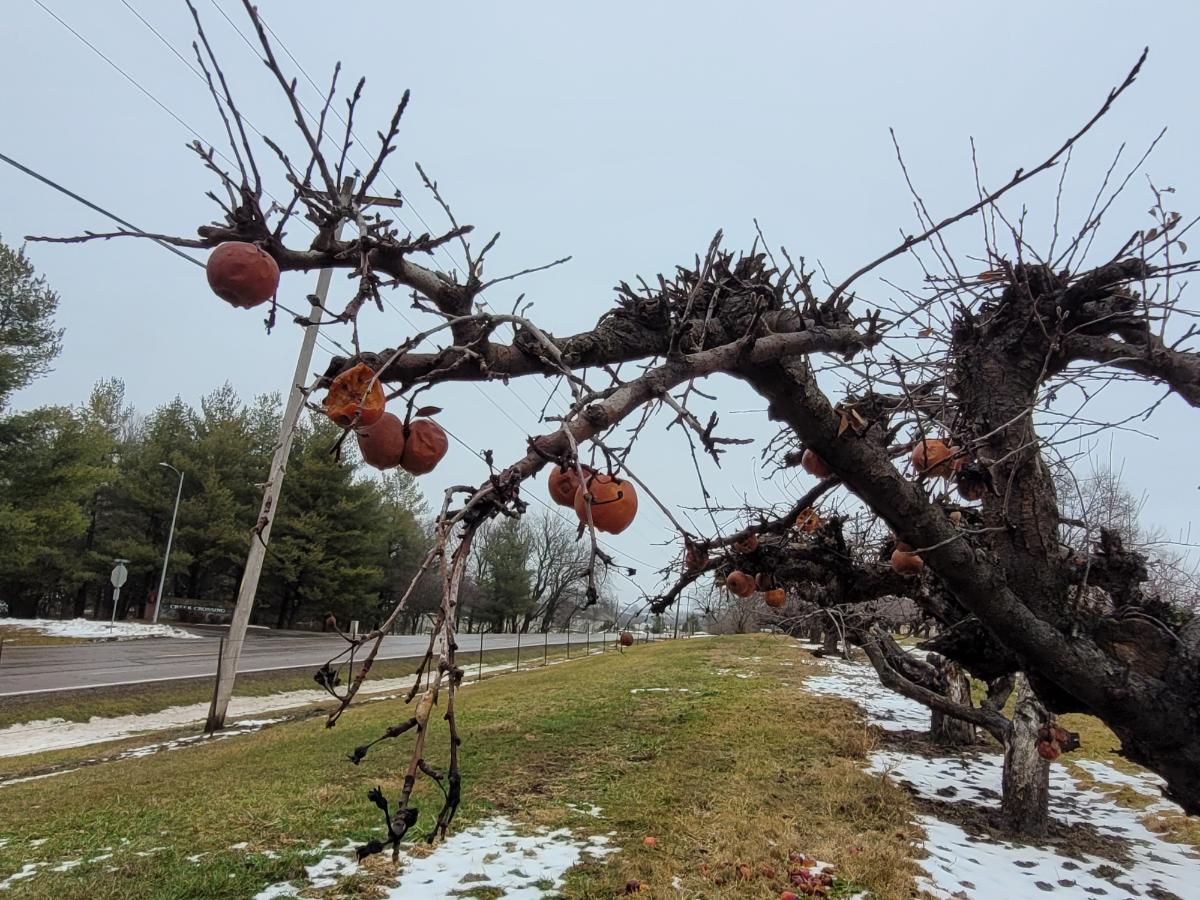
- When pruning, don’t make a flat cut. Cut at an angle so water runs off. Don’t paint the cuts – they do best when allowed to heal naturally.
- Make pruning cuts above a bud – not too close, not too far away.
- Always keep your pruning blade sharp. Dull blades will tear or strip the bark.
- Look at the buds on your apple tree branches. You want the branches to grow out and away from the center of the tree instead of toward it. Choose a plump bud that’s facing away from the tree, then cut above that.
- Cut out weak, diseased, or broken branches.
- If there are two branches going in the same direction and getting into each other’s space, cut out the weaker of the two.
- Remove any branches growing inward toward the tree’s center.
- If you have several scaffolding branches coming out at the top of the trunk, remove all but one. Otherwise, the tree might be prone to splitting. Keep at least a hand width between the scaffold branches you plant to keep.
- Remove branches with narrow crotch angles. These are structurally weak and are prone to breaking in storms or under the stress of many heavy apples.
- Once you’ve dealt with all of these, thin out branches, removing the weaker ones to let air and light into the center of the tree.
Second-Year Pruning

In the second year, it’s time to train the young tree.
You also want to leave branches with a wide angle to the trunk and have about 6 to 9 inches between branches.
Your goal is to encourage the tree to fill up its canopy, so you want to make the tree create as much growth as possible. But you don’t want to encourage any branches to grow taller than the dominant central branch. The central branch has got to be the tallest of them all!
If there are several branches growing out from the top of the tree with the central branch, cut the other ones off so there is no competition. Then, the central leader can keep growing upward. Removing the nearby competing branches will also keep the top of the canopy open, letting sunlight in and air circulate.
These trees usually have limbs growing low on the tree that will need to be cut off. However, the tree is so small that removing all of these limbs at the same time would actually girdle the tree. Cut them back to 4 to 6-inch stubs for now. Once the tree gets a little wider within the next two years, you can cut them off.
Some Pruning Shouldn’t Wait Until Late Winter

Don’t wait until winter to take off damaged, diseased, or dead branches. Prune the branch back, leaving no tears or ragged edges. That invites infection and damage.
Remove fast-growing suckers and watersprouts as soon as you notice them. Watersprouts are the branches that grow straight up off the tops of the branches; these will not bloom. Suckers are the shoots that come up from the lower trunk or the roots of the apple tree rootstock. These shoots are often of a different variety than the main tree and might bear sour little apples if allowed to grow. These also take energy away from the main tree.
One does not master pruning simply by reading some guidelines. Trees are complex beings, and care can vary from one climate to another.

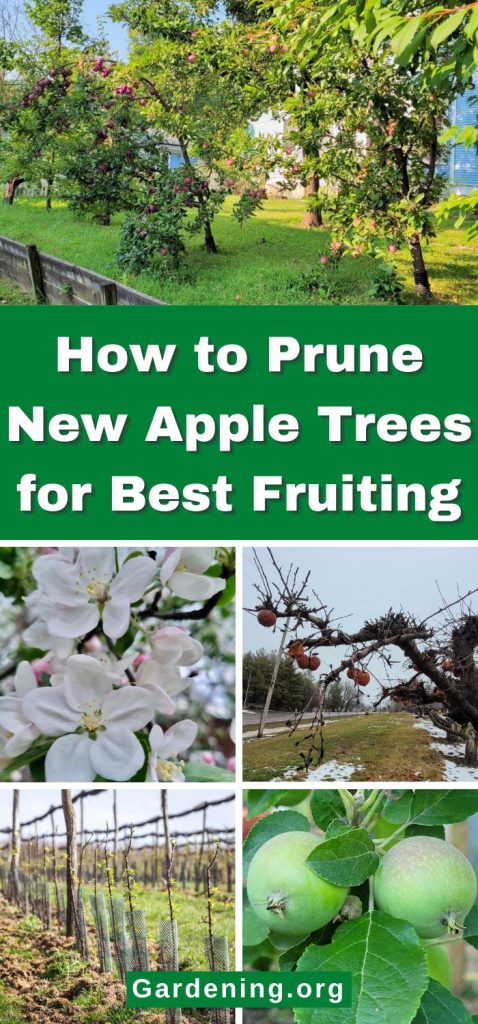
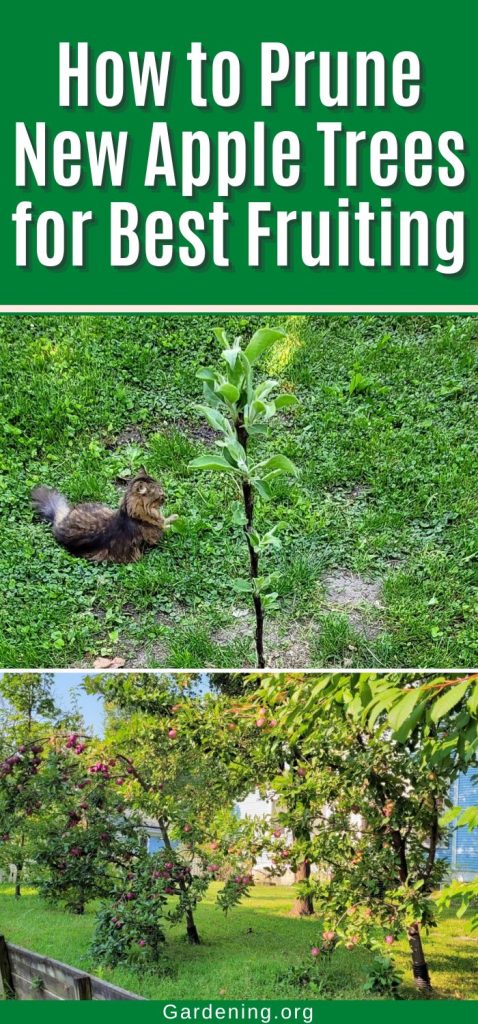
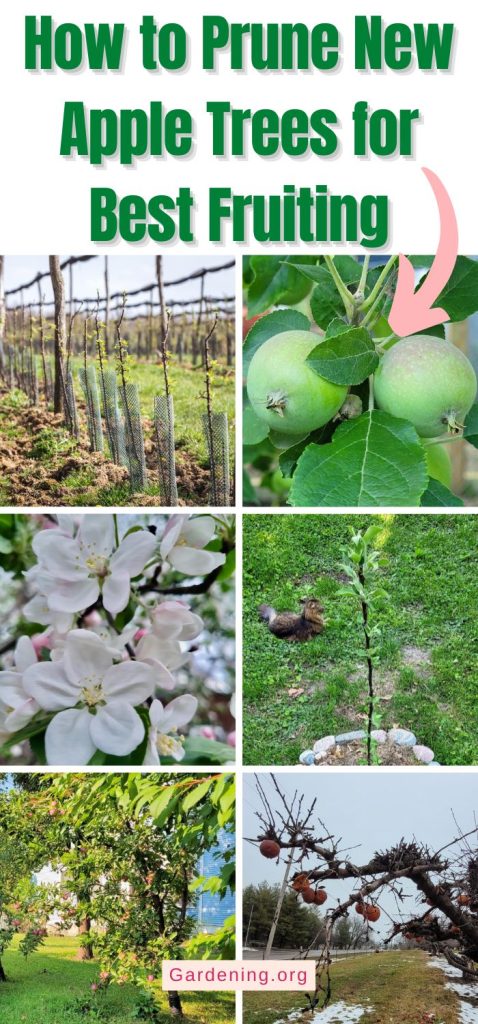

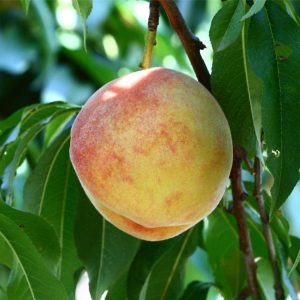


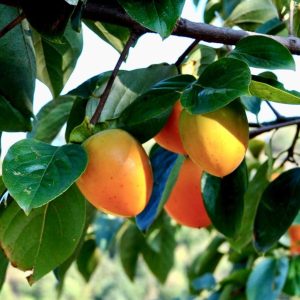
Frank Holzman
Open up the tree so sunlight can penetrate into the center. This is disease and insect prevention. I have a blog, frankholzman.blogspot.com for more info.
Rosefiend!
Yes, that is correct. This is called open pruning or vase pruning. All the apple orchards around my area use this kind of pruning, and that's how Grandma Mary taught me how to prune apple trees.